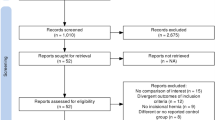Abstract
Purpose
Hernia repair is one of the most commonly performed surgeries in the United States. Since the introduction of the Da Vinci robot, robot-assisted hernia repairs have become more common. In this study we aim to directly compare robotic and laparoscopic hernia repairs as well as explore potential cost differences. We hypothesize that robot-assisted hernia repairs are associated with better patient-reported outcomes.
Methods
We conducted retrospective review to create a cohort study of 53 robotic (37 inguinal and 16 ventral) and 101 laparoscopic (68 inguinal and 33 ventral) hernia repairs. Patient-reported outcomes were measured using the Carolinas Comfort Scale (CCS). Operative details were examined, and a cost analysis was performed.
Results
Combining both hernia types together as well as looking at inguinal and ventral repairs separately, we found that there was no difference in hernia recurrence or 1-year CCS between robotic and laparoscopic hernia repair. For ventral hernia repairs alone, robotic procedure was associated with a decreased length of stay. We found that our robotic cases did have longer operative times and higher costs. The operative times did decrease to a length comparable to that of the laparoscopic cases as experience operating with the robot increased.
Conclusion
In comparison to laparoscopic hernia repair, robotic hernia repair does not improve long-term patient-reported surgical outcomes. However, it does increase the cost of the operation and, in general, result in longer operative times.



Similar content being viewed by others
References
Earle DB (2012) Biomaterials in hernia repair. In: Prevention & management of complications in minimally invasive esophageal surgery, 3rd edn, Chap 36. Society of Laparoendoscopic Surgeons
Vorst AL, Kaoutzanis C, Carbonell AM, Franz MG (2015) Evolution and advances in laparoscopic ventral and incisional hernia repair. World J of Gastrointestin Surg 7(11):293–305
Alexander AM, Scott DJ (2013) Laparoscopic ventral hernia repair. Surg Clin North Am 93(5):1091–1110
Sajic MS, Bokhari SA, Mallick AS, Cheek E, Baig MK (2009) Laparoscopic versus open repair of incisional/ventral hernia: a meta-analysis. Am J Surg 197(1):64–72
McCormack K, Wake B, Perez J, Fraser C, Cook J, McIntosh E, Vale L, Grant A (2005) Laparoscopic surgery for inguinal hernia repair: systematic review of effectiveness and economic evaluation. Health Technol Assess 9(14):1–203
Narkhede R, Shah NM, Dalal PR, Mangukia C, Dholaria S (2015) Postoperative mesh infection-still a concern in laparoscopic era. Indian J Surg 77(4):322–326
Ballantyne GH, Hourmont K, Wasielewski A (2003) Telerobotic laparoscopic repair of incisional ventral hernias using intraperitoneal prosthetic mesh. JSLS 7(1):7–14
Engan C, Engan M, Bonilla V, Dyer DC, Randall BR (2015) Description of robotically assisted single-site transabdominal preperitoneal (RASS–TAPP) inguinal hernia repair and presentation of clinical outcomes. Hernia 19(3):423–428
Ito F, Jarrard D, Gould JC (2008) Transabdominal preperitoneal robotic inguinal hernia repair. J Laparoendosc Adv Surg Tech A 18(3):397–399
Allison N, Tieu K, Snyder B, Pigazzi A, Wilson E (2012) Technical feasibility of robot-assisted ventral hernia repair. World J Surg 36(2):447–452
Tayar C, Karoui M, Cherjui D, Fagniez PL (2007) Robot-assisted laparoscopic mesh repair of incisional hernias with exclusive intracorporeal suturing: a pilot study. Surg Endosc 21(10):1786–1789
Escobar Dominguez JE, Ramos MG, Seetharamaiah R, Donkor C, Rabaza J, Gonzalez A (2016) Feasibility of robotic inguinal hernia repair, a single-institution experience. Surg Endosc 30(9):4042–4048
Corcione F, Esposito C, Cuccurullo D, Settembre A, Miranda N, Amato F, Firozzi F, Caiazzo P (2005) Advantages and limits of robot-assisted laparoscopic surgery: preliminary experience. Surg Endosc 19(1):117–119
Strosberg DS, Nguyen MC, Muscarella P, Narula VK (2017) A retrospective comparison of robotic cholecystectomy versus laparoscopic cholecystectomy: operative outcomes and cost analysis. Surg Endosc 31:1436
Narula VK, Watson WC, Davis SS, Hinshaw K, Needleman BJ, Mikami DJ, Hazey JW, Winston JH, Muscarella P, Rubin M, Patel V, Melvin WS (2007) A computerized analysis of robotic versus laparoscopic task performance. Surg Endosc 21(12):2258–2261
Narula VK, Mikami DJ, Melvin W (2010) Robotic and laparoscopic pancreaticoduodenectomy: a hybrid approach. Pancreas 39(2):160–164
Author information
Authors and Affiliations
Corresponding author
Ethics declarations
Conflict of interest
The authors declare no conflict of interest.
Ethical approval
This study was approved by the Institutional Review Board of The Ohio State University.
Human and animal rights
All procedures performed were in accordance with ethical standards of the institutional research committee, and with the 1964 Helsinki declaration and its later amendments.
Informed consent
Informed consent was obtained from all individual patients as necessary.
Additional information
Publisher's Note
Springer Nature remains neutral with regard to jurisdictional claims in published maps and institutional affiliations.
Rights and permissions
About this article
Cite this article
Zayan, N.E., Meara, M.P., Schwartz, J.S. et al. A direct comparison of robotic and laparoscopic hernia repair: patient-reported outcomes and cost analysis. Hernia 23, 1115–1121 (2019). https://doi.org/10.1007/s10029-019-01943-7
Received:
Accepted:
Published:
Issue Date:
DOI: https://doi.org/10.1007/s10029-019-01943-7




